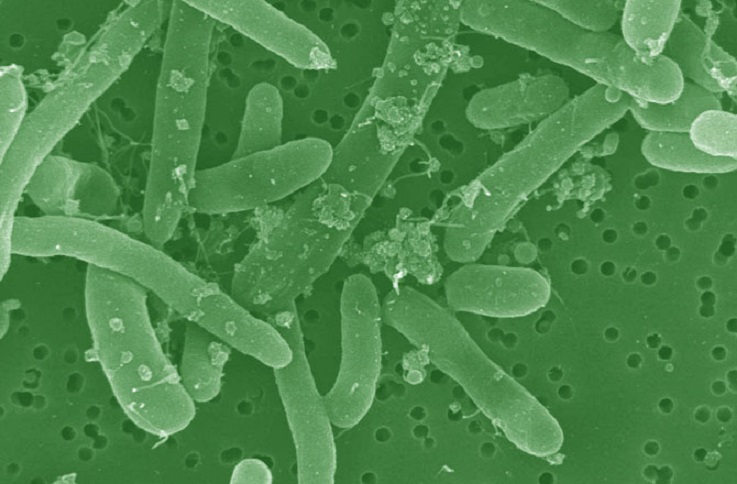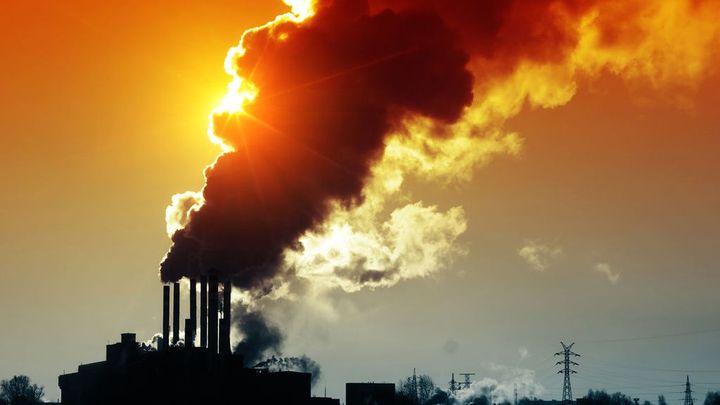
In the long search to find alternatives to fossil fuels and industrial processes that produce tons of waste, several ideas have been forward. These include alternative energy – ranging from solar, wind, geothermal, and tidal – additive manufacturing, and cleaner-burning fuels. All of these ideas have begun to bear serious fruit in recent years thanks to ongoing research and development.
But looking to the long term, it is clear that a complete overhaul of our industrial economy is needed. That's where more ambitious ideas come to the fore, ideas like nanotechnology, biotechnology, and an increasingly popular concept known as the "Glucose Economy." Coined by Steven Chu, a Nobel Prize-winning Chinese-American physicist and the 12th Secretary of Energy under Barack Obama (2009-2013), this concept calls for the development of an economic model that would replace oil with high-glucose alternative fuels.
Chu conceived of the idea while working as a professor of physics and molecular and cellular biology at the University of California, Berkeley. In short, the plan calls for fast-growing crops grown in the tropics – where sunlight is abundant – to be harvested for their glucose (which is an organic fuel) and cellulose (which is an organic polymer). The resulting glucose and cellulose would then be shipped around much as oil is today, for eventual conversion into biofuels and bioplastics.

As Energy Secretary, Steven Chu was responsible for drafting the government strategy that emphasized generating 80 percent of the nation's electricity from clean sources by 2035. This strategy included doubling the number of the department's energy innovation hubs and adding more than $8 billion for new clean-energy funding to the national budget.
His appointment as Energy Secretary also sent a clear message that governments like the US are serious about finding clean alternatives to fossil fuels, not to mention the issue of Climate Change. And while alternative energy sources such as solar, wind, tidal and geothermal all remain possibilities in their own right, the Glucose Economy is different in that it offers an alternative system, rather than just alternative means.
As expected, reliance on biofuels and bioplastics would render the current system of converting oil into gasoline and plastics – a process that produces immense amounts of carbon dioxide through processing and burning – obsolete. Biofuels burn cleaner and produce very little in the way of chemical by-products, while bioplastics are far more resilient and eco-friendly than regular plastics - and not just because they don't present disposal and waste problems (ie. Garbage Island).

Another benefit of the new model is the economic development it will bring to the more impoverished regions of the world. As far as production is concerned, the regions that stand to benefit the most from this changeover are located in Sub-Saharan Africa, Central and South America, and South-East Asia. These regions are already seeing significant economic growth, and a shift like this would ensure their continued growth and development (not to mention the improved quality of life) for many generations to come.
But above and beyond all that, there's the revolutionary potential that exists for design and manufacturing, with architects relying on specially-designed software to create multi-material objects fashioned in part from biomass. This unique combination of biological processes, computer-assisted design (CAD), and human intelligence is looking to trigger a revolution in manufacturing and construction, with everyday materials to buildings created from eco-friendly, structurally sound, biomaterials.
One such architect is David Benjamin, a computational architect and the principal of the New York-based practice The Living. Together with his collaborators, Benjamin is conducting experiments with plant cells, the latest of which is the production of xylem cells – long hollow tubes plants use to transport water. These are computer modeled and grown in a Cambridge University lab and studied to create materials that combine the desired properties of different types of bacteria.

In addition, they are working with sheets of calcium and cellulose, seeking to create structures that will be strong, flexible, and filigreed. And beyond The Living, there are also initiatives like the Living Foundries Program, a Department of Defense initiative that is hoping to hasten the developmental process of biofuels and bioplastics to create an emergent bio-industry that would create "on-demand" production.
Not only would this shave decades off the development process, but also hundreds of millions of dollars for the military-industrial complex. Currently, they spend an estimated $23 billion annually on fuels, oil and lubricants, and all in the name of keeping their military machines operational. Plastic and composite components are also a major expenditure, and securing a source that does not similarly rely on petroleum is seen as a win-win.
Currently, such procedures and methods remain highly experimental and admittedly crude. However, the marketplace for such concepts is growing and is expected to grow even more as city planners and urban development becomes more focused on sustainability and eco-friendly ideas. And if the manufacture of biofuels and medicine is any precedent, it may take as little as 8 to 10 years before this type of biotechnology is ready to enter commercial production - resulting in everything from semi-organic buildings to airframes.

Naturally, there are those who oppose the development of a "glucose economy" as advocated by Chu. Beyond the proponents of fossil fuel energy, there are also those who advocate for a nationally self-sufficient resource base and energy independence, rather than dependence on foreign resources.
In their view, the glucose economy is flawed in that it merely shifts energy dependence of nations like the US from the Middle East and OPEC to the tropics, which could create a whole new slew of geopolitical problems. However, one cannot deny that as alternatives go, Chu's proposal is far preferable to the current post-peak oil model of frakking, tar sands, natural gas, and coal.
It also offers some new and exciting possibilities for the future, where building processes like additive manufacturing would be supplemented by using "biohacked" bacteria to grow structures. These structures would be composed of resilient materials such as cellulose and organic minerals, or possibly carbon nanotubes that are assembled by organic processes.

And the amount of money, waste, energy, and lives saved would be immense, as construction is currently one of the most dangerous and inefficient industries on the planet. Of the 3,929 worker fatalities that were reported in private industry in the US for 2013, 796 or 20.3% were in construction (one in five worker deaths).
According to the CDC, the construction industry employs about 6% of the US workforce but accounts for 20% of the fatalities - the largest number of fatalities reported for any industry sector. And in terms of resource allocation and money, construction is labor-intensive, produces tons of waste, and is almost always over budget.
The situation is even worse in developing nations, where payouts for worker accidents are a major burden on nation's that have low annual revenues. Coupled with the costs of materials and labor, this often leads to construction projects being abandoned, left incomplete, or not conforming to proper safety standards - which in turn leads to more problems down the road.
Compared to all that, a system that utilizes environmentally-friendly molecules and materials, enhances growing operations, fostered greater development and economic cooperation, and leads to a safer, cheaper, less wasteful construction industry seems preferable. And it does offer a solution of what to do about two major industries that are ailing and in desperate need of modernization.
Sources:
- www.thelivingnewyork.com/
- www.economist.com/node/13941982
- www.bls.gov/news.release/cfoi.nr0.htm
- www.cdc.gov/niosh/topics/construction/
- www.politico.com/news/stories/0111/48245.html
- www.tampabay.com/news/perspective/a-scientist-who-is-on-tap-on-top/1020822
- www.aspenideas.org/blog/steven-chu-glucose-economy-and-energy-alternatives
- www.fastcoexist.com/3015899/futurist-forum/how-well-grow-the-next-generation-of-buildings-with-bacteria
- inhabitat.com/designing-and-building-with-bacteria-could-be-the-future-of-architecture/
- www.frontpagemag.com/2011/tait-trussell/secretary-chus-quirky-ideas/
- www.nytimes.com/gwire/2011/06/01/01greenwire-biofuels-future-that-us-covets-takes-shape-in-brazil
Image Credits:
- Top Image: fastcoexist.com
- Steven Chu: ap.org
- Bioplastics: climatetechwiki.org
- Grown Materials: inhabitat.com
- Airframe: thelivingnewyork.com
- Bacteria: JBEI/Marcin Zemla and Manfred Auer








